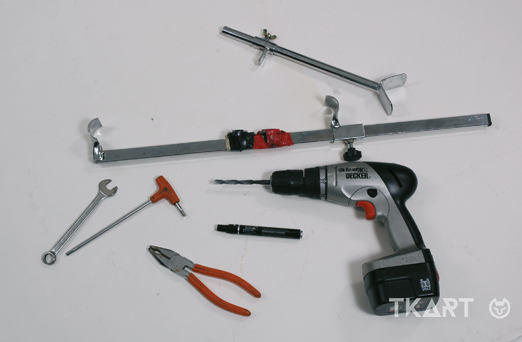Frequent Searches
Frequent Searches
Looking at a kart superficially, it is easy for those with less expertise to consider the seat an “additional” accessory. Basically: there’s a frame, an engine, tyres, brakes, a steering wheel ...then, of course, you also need a piece of plastic (not that it is made of plastic...) on which to sit. Nothing could be more inaccurate, because a stark vehicle like a kart, on which everything is kept down to the bare bones, the seat has a very important role and becomes a fundamental part of the “chassis-system”. Indeed, the seat confers increased or decreased rigidity.
Furthermore, its position has a significant influence on the set-up and the way the kart responds.
So...listen to the “doc.” and these instructions on how to install a seat on the chassis properly.

It may seem trivial, but the first step is to choose the right sized seat. It’s nothing complicated, just sit in an unmounted seat and rest your hands to the sides of your torso, at the height of your ribs, in order to mimic the thickness of a rib protection vest (which must always be used). Now, having placed the kart on a trolley to make working on it less complicated, place the seat chosen onto the chassis and begin positioning it using the special jigs (lower bracket and rear bracket).
The first jig should be placed exactly under the seat, in order to determine the height of the seat bottom. Use the second jig and a tape measure to measure the distance between the axle and the upper/rear edge of the seat, which must be the same as the one supplied by the kart manufacturer (it is usually about 20 cm). The next measurements needed are those between the seat tabs and the front tube. Caution: the distance of the right tab must be greater than the left one. Indeed, the seat should be mounted in an asymmetric position on the kart.